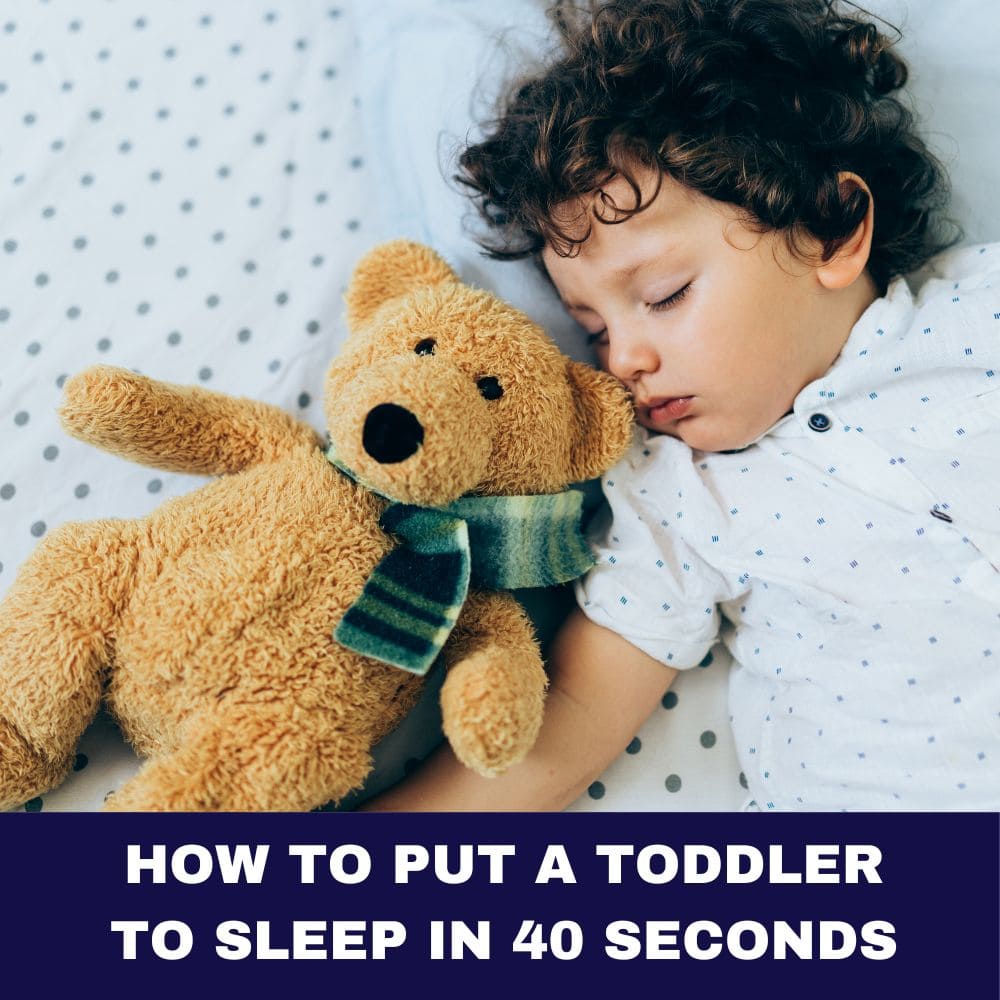Ah, the joys of parenthood – a rollercoaster ride filled with precious moments and unique challenges. Just when you think you’ve got this whole baby sleep thing figured out, bam! The dreaded 10 month sleep regression knocks on your door, leaving you and your little one exhausted and perplexed. But fear not, fellow parents! We’re about to embark on a journey to decode this enigma and equip you with seven ingenious tricks to conquer it like a pro.

Understanding the 10 Month Sleep Regression
Let’s start by demystifying what exactly the 10 month sleep regression is all about. Imagine your baby’s mind as a sponge, soaking up new skills and experiences at lightning speed. Around this age, they’re reaching major developmental milestones, from crawling and pulling themselves up to babbling and understanding simple words. With all these exciting changes happening, it’s only natural for their sleep patterns to go a little haywire.
Causes of the 10 Month Sleep Regression
Several factors can contribute to this temporary sleep disturbance:
- Developmental Leaps: As your baby masters new skills like crawling or standing, their brain is working overtime, causing them to wake more frequently during the night.
- Wonder Weeks: These are periods when your baby experiences cognitive leaps, leading to fussiness, clinginess, and disrupted sleep.
- Separation Anxiety: Your baby may start to experience separation anxiety, making it harder for them to settle down without you nearby.
- Sleep Associations: If your baby has become accustomed to certain sleep associations (e.g., being rocked or fed to sleep), they may struggle to self-soothe when these associations are absent.
Signs Your Baby is Experiencing the 10 Month Sleep Regression
So, how can you tell if your little one is going through this phase? Here are some telltale signs to watch out for:
- Increased night wakings and difficulty falling back asleep
- Disrupted nap schedules or refusing to nap altogether
- More fussiness, clinginess, or crankiness during the day
- Regression in previously established sleep habits
Don’t worry; these signs are completely normal and temporary.
| Sign | Description |
|---|---|
| Increased Night Wakings | Your baby wakes up more frequently during the night and has difficulty falling back asleep. |
| Disrupted Nap Schedules | Your baby resists or struggles to take their regular naps, or nap durations become shorter. |
| Fussiness or Clinginess | Your baby seems crankier, clingier, or more easily frustrated during the day. |
| Regression in Sleep Habits | Your baby’s previously established sleep routines or patterns start to unravel. |
How Long Does the 10-Month Sleep Regression Last?
The duration of this regression can vary, but most experts agree that it typically lasts anywhere from 2-6 weeks. However, some babies may experience it for a shorter or longer period. The key is to be patient and consistent with your approach, and your baby’s sleep patterns should eventually return to normal.
Next Step: Keep a sleep diary to track your baby’s sleep patterns and behaviors during this phase. This can help you identify any underlying causes or triggers that may be exacerbating the regression.
10 Month Old Sleep Needs
Before we dive into our ingenious tricks, let’s quickly review the sleep needs of a 10-month-old baby. At this age, your little one should be getting around 12-15 hours of sleep per day, including naps. Most babies this age take two naps, one in the morning and one in the afternoon, with the longest stretch of sleep happening at night.
Establishing an age-appropriate sleep schedule and sticking to it as much as possible can help minimize the disruptions caused by the 10-month sleep regression. But we’ll get to that later!
Next Step: Adjust your baby’s wake windows and nap schedule as needed to ensure they’re getting the right amount of sleep for their age.
| Wake-Up Time | Wake Window | Nap Duration | Nap End Time | Wake Window | Bedtime Range |
|---|---|---|---|---|---|
| 7:00 AM | 2 – 3 hours | 1 – 2 hours | 10:00 – 11:00 AM | 2.5 – 3.5 hours | 6:00 – 8:00 PM |
7 Ingenious Tricks to Conquer the 10 Month Sleep Regression
Now, let’s dive into the heart of the matter – the seven ingenious tricks that’ll help you and your baby navigate this challenging phase like champs!
1) Establish a Soothing Bedtime Routine
Consistency is key when it comes to helping your baby sleep through the night. Establish a calming bedtime routine that incorporates activities like a warm bath, gentle massage, reading a book, or singing lullabies. This predictable sequence of events signals to your baby’s brain that it’s time to wind down and prepare for sleep.
Next Step: Create a bedtime routine checklist and stick to it every night, even when your baby is resisting sleep.

2) Offer a Lovey or Security Object
During this period of heightened separation anxiety, having a special lovey or security object can work wonders in comforting your baby. Whether it’s a soft blanket, a stuffed animal, or a sleep sack, this familiar item can help your little one feel safe and secure, promoting better sleep.
Next Step: Introduce a lovey or security object gradually, and make sure it’s always within reach during sleep times.
3) Adjust Wake Windows
Wake windows refer to the ideal amount of time your baby should be awake between naps or before bedtime. As your baby grows and their sleep needs change, you may need to adjust these wake windows to prevent overtiredness or undertiredness, both of which can contribute to sleep difficulties.
For a 10-month-old, a typical wake window might be:
- 2-3 hours after morning wake-up
- 2.5-3.5 hours after the first nap
- 2-3 hours before bedtime
However, every baby is unique, so you may need to experiment to find the sweet spot for your little one.
Next Step: Observe your baby’s sleepy cues and adjust their wake windows accordingly. Keep track of what works best in your sleep diary.
4) Try Earlier Bedtimes
Contrary to popular belief, an earlier bedtime can often help babies sleep better during the 10-month sleep regression. Overtiredness can make it harder for your baby to fall and stay asleep, so aim to put them down earlier than usual, even if they protest.
A rough guideline for a 10-month-old’s bedtime is between 6-8 PM, but again, every baby is different. Pay attention to their sleepy cues and adjust as needed.
Next Step: Gradually shift your baby’s bedtime earlier by 15-30 minutes every few days until you find the sweet spot.
5) Be Patient and Consistent
This regression phase can be frustrating and exhausting, but it’s crucial to remain patient and consistent with your approach. Babies thrive on routine and predictability, so stick to your sleep strategies, even when they seem not to be working right away.
Resist the temptation to revert to old sleep associations or habits, as this can prolong the regression and make it harder for your baby to self-soothe.
Next Step: Take a deep breath and remind yourself that this phase is temporary. Stay the course, and your baby’s sleep patterns will eventually improve.
6) Avoid Forming Poor Sleep Habits
While it’s tempting to do whatever it takes to get your baby to sleep during this challenging time, be mindful of not forming poor sleep habits that will be harder to break later on. For example, rocking or feeding your baby to sleep every night can create sleep associations that will make it harder for them to self-soothe when they wake up.
Instead, focus on establishing positive sleep associations, such as a calming bedtime routine and a comfortable sleep environment.
Next Step: If you’ve accidentally formed a poor sleep habit, gradually phase it out by introducing new, healthier sleep associations.
7) When to Seek Professional Help
If you’ve tried various strategies and your baby’s sleep regression persists for more than 6-8 weeks, or if you’re noticing signs of excessive fatigue or distress, it may be time to seek professional help.
A pediatric sleep consultant or your pediatrician can provide personalized guidance and support to address your baby’s specific sleep needs and challenges.
Next Step: Don’t hesitate to reach out to a sleep professional if you’re feeling overwhelmed or if your baby’s sleep issues are impacting their overall health and well-being.
The Importance of Proper Nutrition During Sleep Regressions
While establishing healthy sleep habits is crucial during the 10-month regression, it’s equally important to ensure your baby’s nutritional needs are met. Proper nutrition can have a significant impact on your little one’s sleep quality and overall well-being.
Firstly, consider your baby’s diet. Ensure they’re getting a well-balanced mix of proteins, healthy fats, complex carbohydrates, and essential vitamins and minerals. Avoid heavily processed foods, sugary treats, and caffeine, as these can potentially disrupt sleep patterns.
For breastfed babies, your diet as a nursing parent also plays a role. Consuming a nutrient-rich diet can help provide your baby with the necessary nourishment through your breast milk.
Additionally, staying hydrated is key for both you and your baby. Dehydration can lead to crankiness, discomfort, and difficulty sleeping. Offer your baby plenty of fluids throughout the day, and don’t forget to keep yourself hydrated as well.
Lastly, consider incorporating natural sleep-promoting foods into your baby’s diet. For example, foods rich in tryptophan (like turkey, eggs, and nuts) can help boost melatonin production, while complex carbohydrates (such as whole grains) can promote a calming effect.
By ensuring your baby’s nutritional needs are met, you’ll not only support their overall growth and development but also potentially improve their sleep quality during this challenging phase.
| Food Category | Examples |
|---|---|
| Tryptophan-Rich Foods | Turkey, eggs, nuts, seeds, soybeans |
| Complex Carbohydrates | Whole grains (oats, brown rice, quinoa), sweet potatoes, bananas |
| Calcium-Rich Foods | Yogurt, cheese, leafy greens, tofu |
| Magnesium-Rich Foods | Avocados, spinach, pumpkin seeds, black beans |
More Tips for Surviving the 10-Month Regression
In addition to the seven ingenious tricks we’ve covered, here are some extra tips to help you and your baby get through this challenging phase:
- Let Baby Practice New Skills During Awake Times: Allow your baby ample opportunities to practice their newfound skills, like crawling, standing, or babbling, during their awake times. This can help them expend energy and feel more content at bedtime.
- Create a Calm Sleep Environment: Ensure your baby’s sleep space is cool, dark, and free from distractions. Consider using white noise or calming lullabies to create a soothing atmosphere.
- Reduce Number of Naps: If your baby is resisting naps or struggling to fall asleep during the day, you may need to temporarily reduce the number of naps or adjust their timing.
- Don’t Be Afraid to Ask for Help: Caring for a baby going through a sleep regression can be overwhelming, especially if you’re already sleep-deprived. Don’t hesitate to ask your partner, family members, or friends for help with household chores, errands, or even taking shifts with the baby. Remember, it takes a village!
- Consider Sleep Training Methods: If you’re open to it, this could be an opportune time to introduce gentle sleep training methods, such as gradual extinction or the pick-up-put-down technique. These approaches can help your baby learn to self-soothe and sleep independently. However, make sure to do your research and choose a method that aligns with your parenting philosophy.
- Invest in Helpful Products: While not a magic solution, certain products can provide some relief during the 10-month sleep regression. For instance, weighted sleep sacks or wearable blankets can help mimic the feeling of being held, promoting a sense of security and better sleep. White noise machines can also help mask external sounds that may disrupt your baby’s sleep.
Case Studies: Real Parents, Real Experiences with the 10-Month Sleep Regression
Sometimes, hearing from fellow parents who have been through the same experience can provide valuable insights and inspiration. Here are a few real-life case studies of parents who successfully navigated the 10-month sleep regression:
Sarah and her son, Liam
“The 10-month sleep regression hit us hard! Liam, who had been a great sleeper, suddenly started waking up multiple times a night, crying inconsolably. We tried everything, from adjusting his bedtime to introducing a lovey, but nothing seemed to work. That’s when we decided to seek help from a sleep consultant. She guided us through gentle sleep training techniques, and within a few weeks, Liam was back to sleeping through the night. The key was consistency and patience.”
Mike and his daughter, Emma
“Emma’s 10-month sleep regression coincided with her mastering the art of crawling. She was so excited about her new skill that she refused to nap during the day and would wake up multiple times at night to practice crawling. We realized that we needed to provide her with ample opportunities to crawl and explore during her awake times. Once we did that, and stuck to a consistent bedtime routine, her sleep gradually improved.”
Jessica and her son, Ethan
“Ethan’s sleep regression was tough, but what really helped us get through it was having a solid support system. My partner and I took shifts at night, allowing each of us to get some uninterrupted sleep. We also enlisted the help of grandparents for occasional date nights, giving us a much-needed break. It’s amazing how much more manageable the situation became when we didn’t feel so alone in it.”
These case studies highlight the varied experiences parents can have with the 10-month sleep regression and the different strategies that can work. From seeking professional help to adjusting routines and leaning on support systems, there’s no one-size-fits-all solution, but with perseverance and an open mind, you’ll find what works best for your family.

Managing Your Own Sleep Deprivation
While supporting your baby through the 10-month sleep regression, it’s equally important to prioritize your own well-being and self-care. Sleep deprivation can take a toll on your physical and mental health, making it harder to cope with the challenges of parenthood.
Here are some tips for managing your own sleep needs during this phase:
- Take Shifts with Your Partner: If you have a co-parent, consider taking shifts throughout the night to ensure each of you gets some uninterrupted sleep.
- Nap When Possible: Whenever your baby naps, try to catch up on your own rest, even if it’s just a short power nap.
- Ask for Help: Don’t be afraid to enlist the support of family members or friends to help with childcare or household tasks, freeing up some time for you to rest.
- Practice Self-Care: Make time for activities that help you relax and recharge, whether it’s taking a warm bath, going for a walk, or practicing gentle stretches or meditation.
Remember, you can’t pour from an empty cup. Prioritizing your own well-being will not only benefit you but also allow you to be a more patient and present parent for your baby.
Light at the End of the Tunnel
If you’re in the thick of the 10-month sleep regression, it’s easy to feel like this phase will never end. But take heart, fellow parents – there is light at the end of the tunnel! With patience, consistency, and the right strategies, your baby’s sleep patterns will eventually return to normal.
This regression is simply a temporary bump in the road, a sign that your little one is growing, developing, and reaching exciting new milestones. Embrace this phase as a testament to your baby’s incredible growth and development, and trust that with time and support, they’ll navigate it successfully.
As you continue on this journey, remember to celebrate the small victories, whether it’s a full night of uninterrupted sleep or a longer daytime nap. Each step forward is a testament to your resilience and your baby’s ability to adapt and overcome.
So, take a deep breath, lean on your support system, and know that you’ve got this! The 10-month sleep regression may be an enigma, but with the seven ingenious tricks in your arsenal, you’re well on your way to decoding it and reclaiming those restful nights once again.
Stay strong, stay patient, and keep those precious moments of joy and wonder close to your heart. This too shall pass, and you’ll emerge from this phase as an even more amazing, resilient parent.
FAQ – 10 Month Sleep Regression
What are the typical sleep needs of a 10-month-old baby?
At 10 months old, most babies need around 12-15 hours of sleep per day, including naps. This is typically divided into 10-12 hours of nighttime sleep and 2-3 hours of daytime naps.
Will my 10-month-old baby go back to their normal sleep pattern after the regression?
Yes, the 10-month sleep regression is temporary, and your baby’s sleep patterns should eventually return to normal once they’ve adjusted to their new developmental milestones.
Are there any products that can help my 10-month-old baby sleep better during this regression?
While not a cure-all, certain products can provide some relief, such as weighted sleep sacks, white noise machines, or blackout curtains to create a soothing sleep environment.
Is the 10-month sleep regression a sign that the 12-month sleep regression is coming soon?
Not necessarily. While some babies may experience multiple sleep regressions around these developmental milestones, others may only experience one or the other. Each baby is unique, and their sleep patterns can vary.
Should I sleep train my baby during the 10-month sleep regression?
This is a personal decision that depends on your parenting philosophy and the severity of your baby’s sleep issues. Some experts recommend avoiding sleep training during a regression, as it can be more challenging for your baby to learn new sleep habits. However, others believe it can be an opportune time to introduce gentle sleep training methods.





